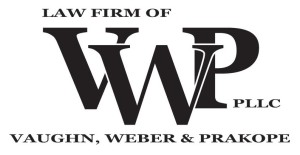Rent Stabilized Status Lost in Bankruptcy
Will filing bankruptcy cause you to lose your rent-stabilized apartment?
Quite possibly.
On April 10, 2012, the United States Bankruptcy Court, S.D. New York ruled that a chapter 7 debtor could not exempt the value of her rent stabilized lease (SeeIn re Santiago-Monteverde, 466 B.R. 621 (Bankr. S.D.N.Y. 2012). Unfortunately,0n September 10, 2012, the debtor lost her appeal to the United States District Court, S.D. New York. The District Court affirmed the bankruptcy court’s ruling which rejected the debtor’s argument that the value of her rent-stabilized lease is a qualifying local public assistance benefit under section 282(2) of New York Debtor and Creditor Law.
It appears that the debtor’s chapter 7 case was going rather smoothly until the chapter 7 Trustee received an offer from the Debtor’s landlord to purchase the Trustee’s interest in the Rent-stabilized lease. This set off a chain of events which, for the time being, have resulted in the debtor potentially being forced out of her rent-stabilized apartment.
Thus, until legislation is enacted which allows debtors to safely exempt the value of their rent stabilized lease, bankruptcy practitioners will have to tread carefully when dealing with a debtor who leases a rent-stabilized apartment.
Bankruptcy Attorney in Mineola
If you would like more information regarding the subject of this post or a free consultation with a bankruptcy attorney, call the Law Firm of Vaughn, Weber & Prakope, PLLC at 516-858-2620.
As stated in two earlier posts, Governor Paterson has signed into law S.7034-A/A.8735-A which will increase the amount of New York’s bankruptcy exemptions and allow NY debtors to choose the Federal or State exemptions. A new section 285 will be added to the Debtor and Creditor Law permitting NY debtors to choose either the current Federal exemptions enumerated in 11 U.S.C. 522(d) (see below) or the new New York exemptions (see Changes to NY Bankruptcy Exemptions) .
The Federal Exemptions available under 11 U.S.C. 522(d) are:*
(1) The debtor’s aggregate interest, not to exceed $21,625 in value, in real property or personal property that the debtor or a dependent of the debtor uses as a residence, in a cooperative that owns property that the debtor or a dependent of the debtor uses as a residence, or in a burial plot for the debtor or a dependent of the debtor.
(2) The debtor’s interest, not to exceed $3,450 in value, in one motor vehicle.
(3) The debtor’s interest, not to exceed $550 in value in any particular item or $11,525 in aggregate value, in household furnishings, household goods, wearing apparel, appliances, books, animals, crops, or musical instruments, that are held primarily for the personal, family, or household use of the debtor or a dependent of the debtor.
(4) The debtor’s aggregate interest, not to exceed $1,450 in value, in jewelry held primarily for the personal, family, or household use of the debtor or a dependent of the debtor.
(5) The debtor’s aggregate interest in any property, not to exceed in value $1,150 plus up to $10,825 of any unused amount of the exemption provided under paragraph (1) of this subsection.
(6) The debtor’s aggregate interest, not to exceed $2,175 in value, in any implements, professional books, or tools, of the trade of the debtor or the trade of a dependent of the debtor.
(7) Any unmatured life insurance contract owned by the debtor, other than a credit life insurance contract.
(8) The debtor’s aggregate interest, not to exceed in value $11,525 less any amount of property of the estate transferred in the manner specified in section 542(d) of this title, in any accrued dividend or interest under, or loan value of, any unmatured life insurance contract owned by the debtor under which the insured is the debtor or an individual of whom the debtor is a dependent.
(9) Professionally prescribed health aids for the debtor or a dependent of the debtor.
(10) The debtor’s right to receive–
(A) a social security benefit, unemployment compensation, or a local public assistance benefit;
(B) a veterans’ benefit;
(C) a disability, illness, or unemployment benefit;
(D) alimony, support, or separate maintenance, to the extent reasonably necessary for the support of the debtor and any dependent of the debtor;
(E) a payment under a stock bonus, pension, profitsharing, annuity, or similar plan or contract on account of illness, disability, death, age, or length of service, to the extent reasonably necessary for the support of the debtor and any dependent of the debtor, unless–
(i) such plan or contract was established by or under the auspices of an insider that employed the debtor at the time the debtor’s rights under such plan or contract arose;
(ii) such payment is on account of age or length of service; and
(iii) such plan or contract does not qualify under section 401(a), 403(a), 403(b), or 408 of the Internal Revenue Code of 1986.
(11) The debtor’s right to receive, or property that is traceable to–
(A) an award under a crime victim’s reparation law;
(B) a payment on account of the wrongful death of an individual of whom the debtor was a dependent, to the extent reasonably necessary for the support of the debtor and any dependent of the debtor;
(C) a payment under a life insurance contract that insured the life of an individual of whom the debtor was a dependent on the date of such individual’s death, to the extent reasonably necessary for the support of the debtor and any dependent of the debtor;
(D) a payment, not to exceed $21,625, on account of personal bodily injury, not including pain and suffering or compensation for actual pecuniary loss, of the debtor or an individual of whom the debtor is a dependent; or
(E) a payment in compensation of loss of future earnings of the debtor or an individual of whom the debtor is or was a dependent, to the extent reasonably necessary for the support of the debtor and any dependent of the debtor.
(12) Retirement funds to the extent that those funds are in a fund or account that is exempt from taxation under section 401, 403, 408, 408A, 414, 457, or 501(a) of the Internal Revenue Code of 1986.
*as of 10/8/10.
We proudly assist residents of Long Island (Nassau county, Suffolk county) and New York City (Queens, Brooklyn, Bronx, Staten Island, Manhattan) with their bankruptcy filings. We are conveniently located in the heart of Nassau County, Long Island, at 393 Jericho Tpke., Ste. 208, Mineola, NY 11501.
Call (516) 858-2620 to arrange a FREE consultation with a bankruptcy attorney!
Governor David A. Paterson has signed into law S.7034-A/A.8735-A, which will increase the amount of New York’s bankruptcy exemptions and allow NY debtors to choose the federal (see Federal Bankruptcy Exemptions & NY) or the new New York state exemptions.
The following is a summary of the changes:
- Increases the homestead exemption under Section 5206 of the CPLR from $50,000 to: $150,000 for the counties of Kings, New York, Queens, Bronx, Richmond, Nassau, Suffolk, Rockland, Westchester, and Putnam; $125,000 for the counties of Dutchess, Albany, Columbia, Orange, Saratoga, and Ulster; $75,000 for the remaining counties in the state;
- Increases motor vehicle exemption under section 282 of the Debtor and Creditor Law from $2,400 to $4,000 for one motor vehicle. If such vehicle is equipped for use by a disabled person, the exemption amount is $10,000 in bankruptcy;
- Increases the amount of the aggregate individual bankruptcy exemption for certain annuities and personal property under section 283 of the debtor and creditor law from $5,000 to $10,000;
- Adds a new section 285 to the Debtor and Creditor Law permitting debtors to choose either the current federal exemptions or the new New York exemptions;
- Increase the exemption for books and religious texts from $50 to $500;
- Increases the domestic animals and food exemption from $450 to $1,000;
- Increases one watch from $35 to $1,000 and adds jewelry and art to this category;
- Increases the tools of trade exemption from $600 to $3,000;
- Adds a wildcard exemption, if no homestead exemption is claimed, of $1,000 for personal property, bank account, or cash;
- Provides for the exemption of one computer and associated equipment, and one cell phone;
- Exempt up to $6000 cash if no homestead exemption taken and aggregate individual bankruptcy exemption totals $5000 or less.
The entire bill can be found here or here .
We proudly assist residents of Long Island (Nassau county, Suffolk county) and New York City (Queens, Brooklyn, Bronx, Staten Island, Manhattan) with their bankruptcy filings.
Call (516) 858-2620 to arrange a FREE consultation with a bankruptcy attorney!



Keep in Touch